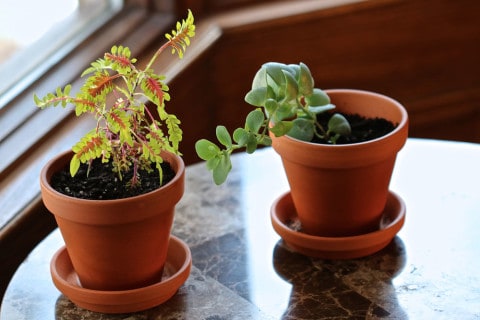Students all over Canada share the same struggle of cramped dorms, basements and bedrooms. Here at the University of Saskatchewan, though, we deal with an additional problem: the only green we see from September through April is on Roughriders uniforms. From now on, create your own natural green space by incorporating plant life into your living space.
Bringing a plant into your world has benefits beyond temporarily assuaging your irrational desire to adopt a puppy. There are plenty of options for low-maintenance greenery that will augment your living space, however small it may be. According to Chrissy Knorr, resident horticulturalist at local Saskatoon business Bill’s House of Flowers, certain potted house plants can fit well with a student lifestyle.
“Succulents and cacti are very easy to care for, and they are tremendously popular, very ‘in’ right now,” Knorr said. “We offer a lot of smaller planters, because I know a lot of students don’t have much space, and they grow very quickly.”
grow very quickly.”
Succulents are a class of plant known for their hardiness and adaptability to a wide range of environments. They retain water efficiently, making them resilient against drought — or a forgetful student. They can thrive indoors, but Knorr warned that these plants still need to be positioned carefully.
“They require a lot of light, natural lighting,” Knorr said. “Artificial lighting can work, but grow lighting as well.”
Luckily, grow lighting isn’t as high-tech as it sounds. Grow light bulbs can be found in many sizes to fit most standard lamps and are offered at stores like Home Depot or Canadian Tire, so if you’re stuck in a basement apartment, you can still let your indoor garden thrive.
Another option that works well in low light is a tropical foliage plant, such as a dracaena or a peace lily. Knorr pointed out the potential benefits these types of plants offer in a small space.
“They are great for cleaning the air. They really help to clean toxins from [it],” Knorr said.
Knorr also brought up the subject of herbs and vegetables. Students can easily pick up some seeds from a local grocer or farmers’ market and start growing their own ingredients for meals. Soil, light exposure and level of moisture still matter, though, as well as plant maintenance.
“You don’t want to grow something you aren’t going to use. Herbs and vegetables grow really well when they are being used up and trimmed back. A lot of herbs and vegetables need a good bright light location as well,” Knorr said.
For beginners, though, Knorr suggested chives and rosemary as fairly simple starting points. Beyond that, speaking to a knowledgeable professional would be a good place to start before you get too involved.
“A mistake is that people maybe get too ambitious to begin with when they are just starting out with plants. You don’t want to start out with a bonsai, say, if you really haven’t taken care of anything else,” Knorr said. “I think it’s a good idea to get your plants from a reputable place. It’s all about picking the right plant for your area, and what your maintenance level is.”
Knorr shared some of her personal favourite indoor plants — with the disclaimer that she falls in love daily with the new varieties she receives in store. Her top choices for low maintenance, yet attractive plants are perfect to start off your shopping.
“A pothos plant is no-fail, super easy to care for as a beginner and they are really satisfying because they grow very quickly. People get excited by the new growth,” Knorr said.
Knorr’s other favorite is a sansevieria, otherwise known as a snake plant. It has rigid, upright leaves with a slight wave and a beautiful scale-like pattern. This plant looks gorgeous and impressive, with a bare minimum of effort on your part.
All aesthetic and health benefits aside, having a plant around can be a wonderful boost when you’re feeling the barren prairie blues. Show nature who’s boss by creating green wherever you want it, whenever you want it — even in the smallest of student spaces.
—
Kyra Mazer